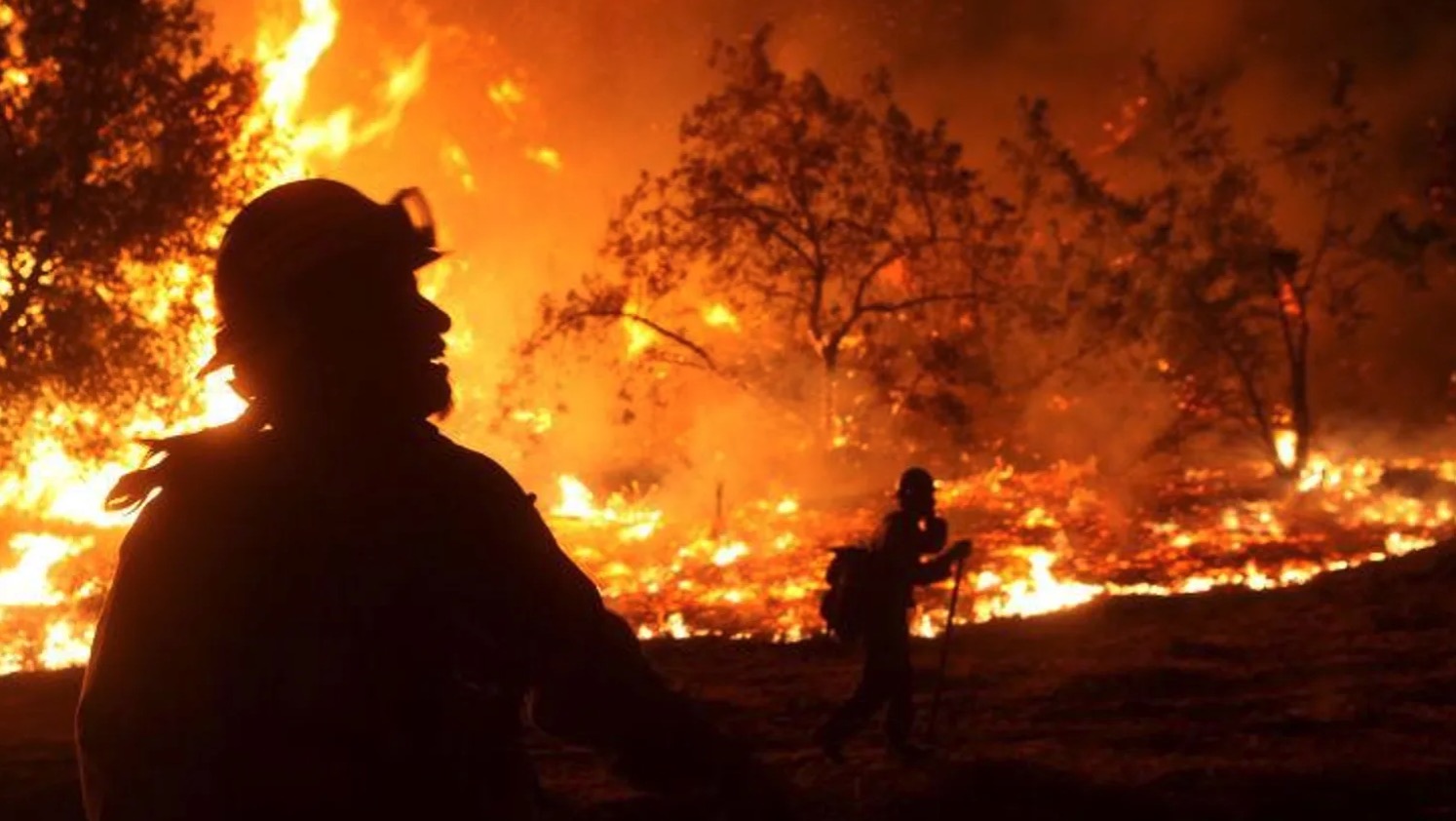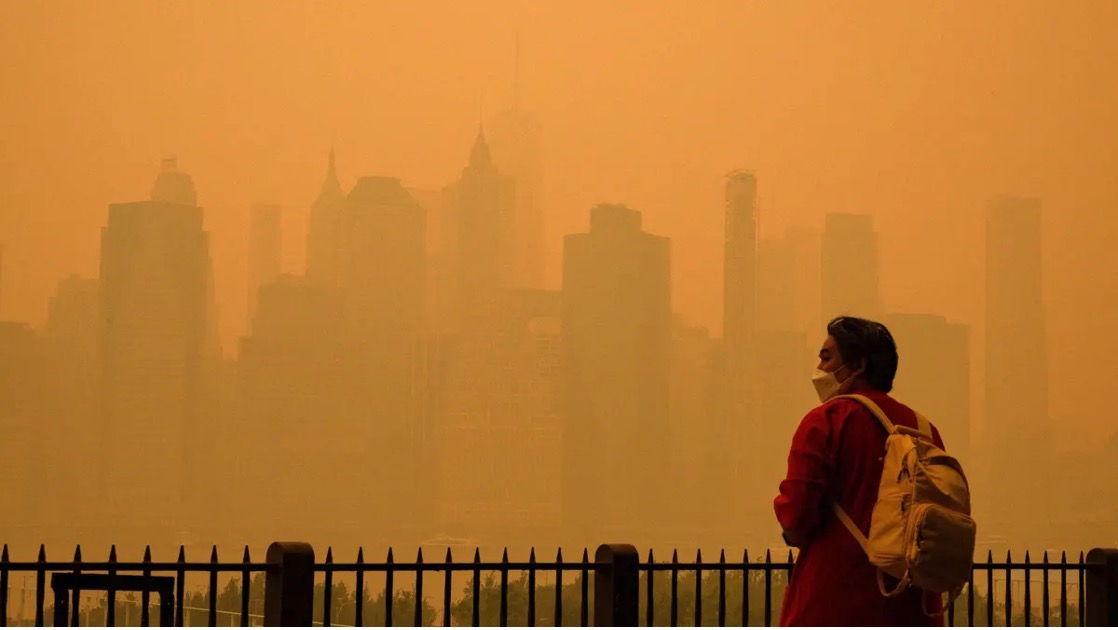Comments
GREENHOUSE EFFECT - The National Oceanic and Atmospheric Administration (NOAA) announced Monday that parts per million of carbon dioxide in our planet’s atmosphere averaged 424 ppm in the month of May, reaching a level not seen for millions of years. In May 2022 it was only 421 ppm so this is a tremendous jump on a year over year basis. It probably reflects the resurgence of the world economy as the COVID pandemic has transitioned to an endemic infection and governments have dropped most prophylactic measures.
NOAA administrator Dr. Rich Spinrad observed, “Every year we see carbon dioxide levels in our atmosphere increase as a direct result of human activity. Every year, we see the impacts of climate change in the heat waves, droughts, flooding, wildfires and storms happening all around us. While we will have to adapt to the climate impacts we cannot avoid, we must expend every effort to slash carbon pollution and safeguard this planet and the life that calls it home.”
Carbon dioxide is a potent greenhouse gas which prevents the heat of the sun’s rays from radiating back out into outer space through the atmosphere at the same rate they used to before the industrial revolution. Keeping more heat on earth means hotter oceans and more powerful hurricanes and cyclones, along with hotter air and more desiccation of soil and forests, leading to more wildfires. Those newly common wildfires in Canada are now blanketing the US Midwest and Northeast with heavy smog.
The only way to stop this march to a fully tropical globe is to stop burning gasoline and diesel in our vehicles, and to stop generating electricity and heating our homes with coal and fossil gas.

The Scripps Institution of Oceanography at the University of California San Diego partnered with NOAA, taking its own measurements at Mauna Loa, and found virtually the same concentrations of CO2 and the same huge leap since last year this time.
Civilization has never faced such a high average temperature of the earth’s surface, which is a direct result of the amount of greenhouse gases in the atmosphere.
Scripps Oceanography geoscientist Ralph Keeling is in charge of the Keeling curve created by his father in the late 1950s.He remarked, “Sadly we’re setting a new record. What we’d like to see is the curve plateauing and even falling because carbon dioxide as high as 420 or 425 parts per million is not good. It shows as much as we’ve done to mitigate and reduce emissions, we still have a long way to go.”
The Scripps site notes that carbon dioxide levels are more than 50% higher than they were in 1750 before the steam engine and the Industrial Revolution. There was then about 280 ppm of CO2 in the atmosphere and it was cold.
Here is the scary part. Human civilization is only about 5,000 to 6,000 years old, characterized by the emergence of cities and role differentiation such that not everyone had to farm– there was room for blacksmiths and tinsmiths and merchants and astronomers and story-tellers. People learned to read and write, to record discoveries and pass them on to the next generation. Elam in Iran and Sumer in southern Iraq were among the earliest such civilizations.
From that time to this, there were just about 280 ppm of carbon dioxide in the atmosphere. It sometimes fell a little or rose a little but it stayed in that range.
We don’t know if a world of 424 ppm CO2 is compatible with civilization. Civilization has never faced such a high average temperature of the earth’s surface, which is a direct result of the amount of greenhouse gases in the atmosphere. Intense hurricanes that flatten electric and telecommunications lines time and again (see: Puerto Rico) could be hard on civilization. Flooding of our major coastal ports could likewise be rather a peril. What if the New York Public library is inundated?
As Dr. Keeler said, this wasn’t the outcome we expected this year, and it is not the direction in which we want the planet to go.
The last time there was this much CO2 up there was the Pliocene, roughly 3-4 million years ago.
I have observed,
“Temperatures in the middle Pliocene were on average 2-3 degrees C. (3.6 – 5.8 degrees F.) higher than today. The Arctic was 10 degrees C. hotter than today’s. Seas were roughly 90 feet higher. Some places now wet were desert-like. See this link for what would happen to five cities under this scenario.
This 90 feet sea level rise is therefore almost certainly baked in and will occur, over the next few hundred years (oceans are huge and cold and take time to warm up). I wouldn’t buy real estate in Miami or lower Manhattan with an idea of passing it on to your grandchildren. Any beachfront property is ephemeral.
The cycles of drought and monsoon flooding were extreme in the west of North America during the Middle Pliocene, and we are already seeing some evidence of this deadly one-two punch in California in the twenty-first century.
And Florida was underwater in the middle Pliocene.
The good thing is that some of the worst consequences of climate change can still be avoided, if we make a major push to get our energy from solar panels and wind turbines and to electrify our transportation.
(Juan Cole teaches Middle Eastern and South Asian history at the University of Michigan. His newest book, "Muhammad: Prophet of Peace Amid the Clash of Empires" was published in 2020. He is also the author of "The New Arabs: How the Millennial Generation Is Changing the Middle East" (2015) and "Napoleon's Egypt: Invading the Middle East" (2008). He has appeared widely on television, radio, and on op-ed pages as a commentator on Middle East affairs, and has a regular column at Salon.com. He has written, edited, or translated 14 books and has authored 60 journal articles. This article was first published in CommonDreams.org.)
















